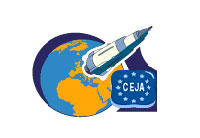Learning about space and agriculture
by the European Space Agency
More articles in People7 January 2003
Today's children may be whiz kids on computers but many know little about the origins of the food they eat and the clothes they wear. Now, thanks to the Tellus mission, children can use their computer skills to learn about agriculture.

The European Council of Young Farmers (CEJA) designed the Tellus website as a fun way to teach primary schoolchildren about the many different aspects of agriculture. Farming is not just the production of meat, milk and vegetables, farming also produces wood for fuel and building, fish to eat, flowers to decorate our homes, and materials such as cotton, wool and linen to make our clothes.
The Tellus website makes learning about all these activities fun. It shows how crops are grown, describes landscapes, gives the history of different farming methods, describes jobs in farming, and even includes a section on art and literature in relation to rural life. The site, which is in all 11 languages of the European Union, also contains information on each European country, its geography and its agriculture.
Adults, as well as children, may be surprised to learn that Space also is playing an increasingly important role in agriculture. The site contains a comic strip Mission to Tellus that describes how four children and a robot dog journey to the ‘Tellus planet’ to set up a farm - complete with plants and animals - to enable astronauts to live in an inhospitable environment. The strip also includes an informative description of space missions and life in space.
The connection between space and agriculture will become more apparent to children as they learn how satellites can help farmers in their work. They provide information on the weather; can pinpoint crops, follow their development and estimate harvests; and even guide tractors
To help schoolteachers use the site a Tellus information pack is available. This can be downloaded from the site or ordered from local distributors. The pack includes information booklets, worksheets for primary school children, an instruction booklet for teachers and, of course, the comic strip. All the material is available in each of the 11 languages of the EU’s Member States.